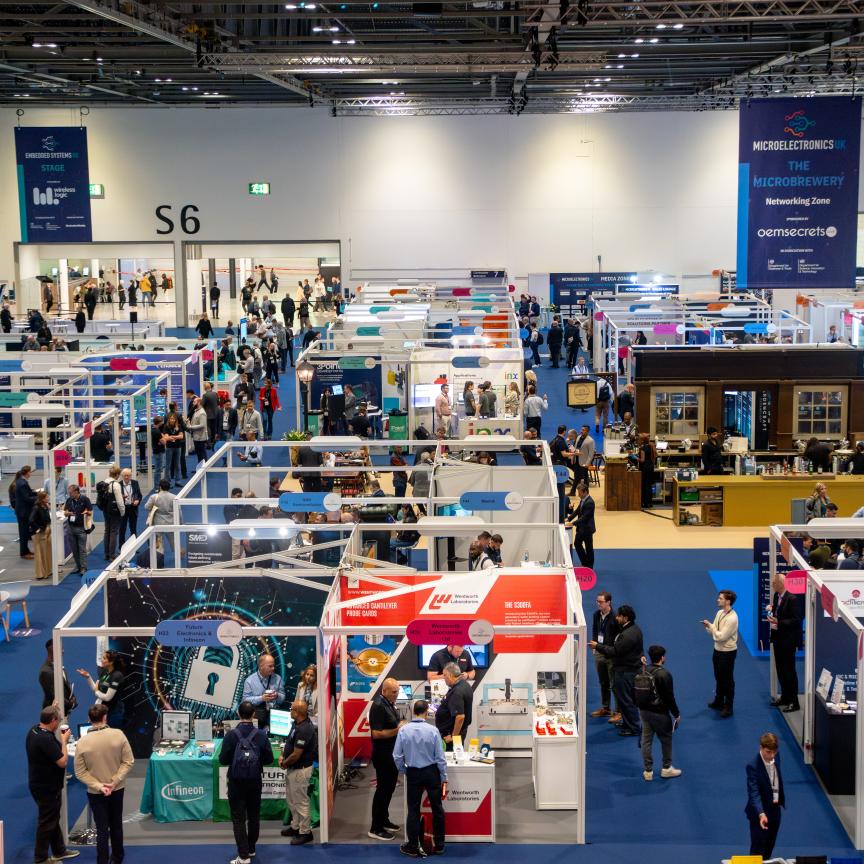Better support is needed for the development of photonics at the component level, which is not thriving under current short-term challenge-led funding programmes, finds Jessica Rowbury
By 2035, UK photonics will be a £50 billion industry, add an additional 150,000 direct jobs and be one of the top three most productive manufacturing sectors in the UK.
This is according to a report, ‘UK Photonics Vision for 2035', published in November 2021 and commissioned by the Photonics Leadership Group (PLG).
The report was created in response to the government’s UK Innovation Strategy launched last Summer, which identified photonics as one of the seven key transformative technology families critical for future growth and prosperity.
To make this potential a reality, the UK’s innovation landscape must create the right environment for permitting invention at the component level, which is where the crucial ‘enabling’ aspect of photonics lies, according to John Lincoln, the PLG’s chief executive. Because of how projects are typically funded in the UK, existing components are often used in place of developing new ones, which limits innovation and threatens the region’s competitiveness.
Government innovation funding is heavily focused on challenges and vertical markets, which, while important for providing pull, leads to risk aversion, according to Lincoln: ‘It tends to result in people integrating very established componentry, including photonics components, because there isn't the timescale to innovate genuinely new things at the component level,’ he said. ‘If you focus at the system level, because you focus on that challenge, you just buy existing components.'
Lincoln continued: ‘If I must deliver on a project in two years, the systems engineering is hard enough. Adding risk in with new components engineering is both risky and time consuming - innovating in the photonics world takes two or three years and innovating in the system takes two or three years. You can do some innovation parallel but not all of it. So it requires a longer amount of time and it's high risk. Governments should be helping to reduce risk in that.’
Giving better support for component innovation is also important for building UK photonics into the system stack, Lincoln added. ‘The danger is if you only fund short-term projects, all you're doing is rearranging components that you're dependent on buying in and importing from outside, which doesn't give you any more resilience. It doesn't actually build sustainable value in the long term,’ Lincoln said.
What’s needed, Lincoln said, is a more balanced approach in the innovation funding landscape that, in addition to short-term challenge-led programmes, understands the longer vision needed for innovating at the component level.
Lincoln added that we are starting to see a shift here, with the government's latest innovation strategy highlighting the importance of transformative, enabling tech innovation - but highlighted that innovation agencies must rethink how they’ve always done things in order to make this possible. ‘You need to overcome the system level inertia that says that we always do challenge based [funding]. What we really need to recognise is that our innovation strategy says you must balance. So that's a sort of a call to action that says - if you do that, look at the monster industry you can grow.’
Andy Sellars, strategic development director for the UK’s Compound Semiconductor Applications Catapult, who is responsible for ensuring the accelerator is creating the greatest impact for the UK economy, echoed Lincoln’s comments on needing a balanced approach: ‘Under the Industrial Strategy Challenge Fund, we’ve tended to see more programmes that are challenge led, focusing on an end market. And I think what we've started to see with the innovation strategies is to view technologies such as photonics and quantum as an enabling technology because they feed into multiple markets.
'The key here is to link those two,' said Sellars. 'We should be supporting both - the enabling technologies and the challenge-led environments. But by linking the two, you're creating translation, you're funding the enabling technologies and the end stage.’
Competing for skills
Another possible limitation to photonics reaching its full potential - both in supporting the UK economy and in delivering the technical advances needed to achieve net zero - is the shortage of skilled personnel.
By 2024, in the UK there will be a shortfall of between 37,000 and 59,000 in meeting the annual demand for core engineering roles, according to the report Engineering UK: The State of Engineering 2019.
With the photonics industry already experiencing issues in obtaining talent, as the industry grows, this will become increasingly difficult, especially with photonics needing to compete with other growing industries, according to Simon Andrews, who leads Fraunhofer UK Research: ‘There are other industries we need to be aware of who have their own shortages. All numeric graduates are in serious demand just now. FinTech [financial technology], software and computing are enormous. That's a UK-centric view, but I think it's probably similar around the world.’
Solving this issue is complex, but one effective method would be to highlight to young engineers that photonics is a crucial technology for tackling socio-environmental issues such as climate change.
Andrews said: ‘We need to be mindful about what young people are looking for. I think what we're seeing increasingly is young people looking to work for socially responsible and ethical employers, and also employers who are part of the green solution and not part of the problem.
‘We [Fraunhofer institute] have young graduates asking us what we’re working on in terms of green technologies. They want to get involved in projects like this. They feel they are making a difference,’ said Andrews.


